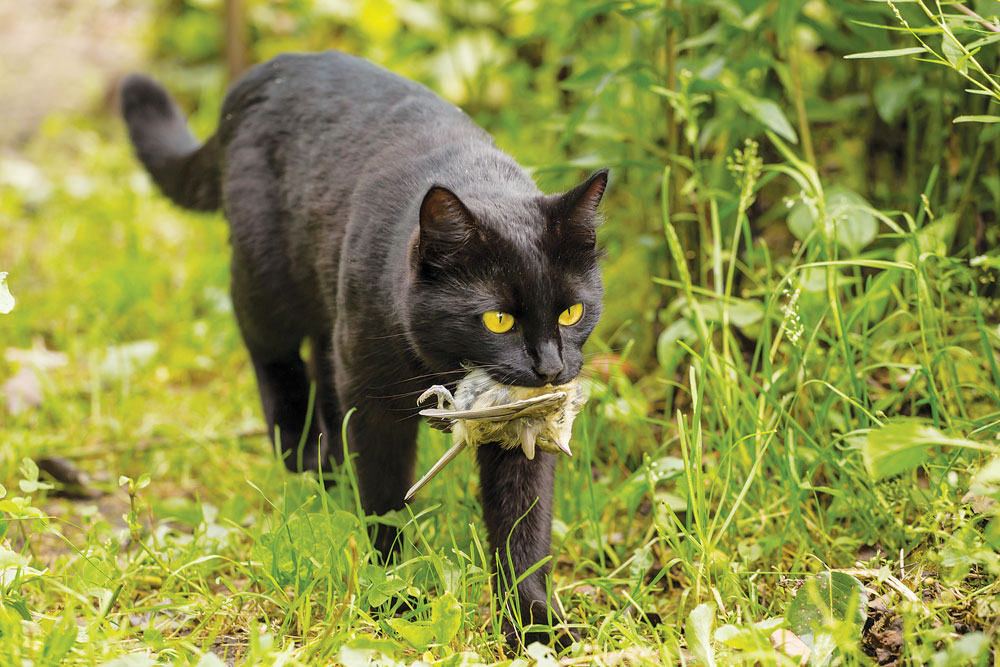Learning the lessons of BB guns and felines
Published 11:30 am Monday, July 9, 2018
I remember growing up on Caudill Drive that my dad taught me to utilize gun safety with a BB gun.
At some point in time, he let me be on my own and I was left to roam and shoot at will. It was fun because I was able to shoot a lot of those little yellow warblers, too many cardinals to mention and a host of blue jays.
I would usually just kill them and let them lay and do nothing with them. On occasion, I would bring one home and show it to my mom and dad.
Trending
I am only guessing here, but reading that probably made you cringe just a little bit didn’t it?
It is sad to think of me as a young boy, going up and down Strode’s Creek killing songbirds for no good reason. It makes me cringe too, because the story is just that, a story. It is not true, I never did that. I only told you that story in this manner to illustrate a point. Every time you let your pet cat outside to roam, it is doing exactly that. Every time you take food behind the Goodwill store and feed feral cats, you are also contributing to the deaths of hundreds if not thousands of songbirds. Let me explain.
There have been numerous studies that have proven that cats, both pets and feral, kill more than 3 billion birds each year. That is billion with a b. The comment that seems to always come from my cat-owning friends is something such as “I feed my cat every day, so they are not out doing such heinous things”. That too is wrong. By killing and not eating their prey, cats are not purposely being evil. Just the opposite, they are simply acting upon their instincts. Female cats have always brought home prey to feed hungry kittens. It is part of them, it is what they do to maintain the species. When a cat brings home a bird, or mouse, to you at home they are simply acting out the natural role of mother and teacher. They would use such situations to teach their young about their food sources. It is their survival instinct. Studies have shown that the number of wildlife deaths increases for cats that have been spayed or neutered.
Which brings me to the next topic that we should consider, especially in our little hometown. One cat, on average, has five kittens, three times per year. When those kittens reach maturity they have cats on their own. Statistically speaking one male-female pair of cats can be responsible for 420,000 cats in seven years. That is astonishing, isn’t it? Do you want to know why we see more coyotes, even in town now? Part of the reason is there are so many feral cats. Coyotes are opportunistic feeders. Cats are the food of opportunity. It makes for a good marriage, ecologically speaking.
That is the uncomfortable news. Is there any good news to this? Yes, most certainly.
Cats do make great companions. If you want to have one, then please spay or neuter them. This will help serve to keep the numbers down. If you have a cat, then please keep it inside. Don’t let it outside to roam. If you are feeding the cats behind the Goodwill store, then please know you are indirectly responsible for the deaths of too many songbirds to count and for a portion of the increase in our local coyote population. The coyotes thank you for it.
Trending
If the science behind this article interests you then please look up www.livescience.com and type ‘cats’ in their search engine. Sometime after that, I hope to see you on, or off, the trail!
Craig Caudill is a lifelong resident of Winchester and serves as Director of Nature Reliance School. He is the author of Extreme Wilderness Survival and Ultimate Wilderness Gear. Please feel free to contact Craig at info@naturereliance.org or through any of the various social media platforms available.






